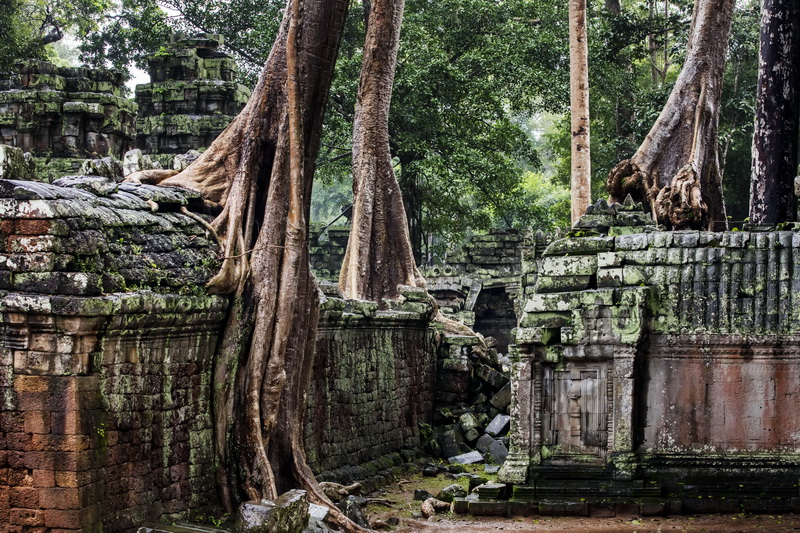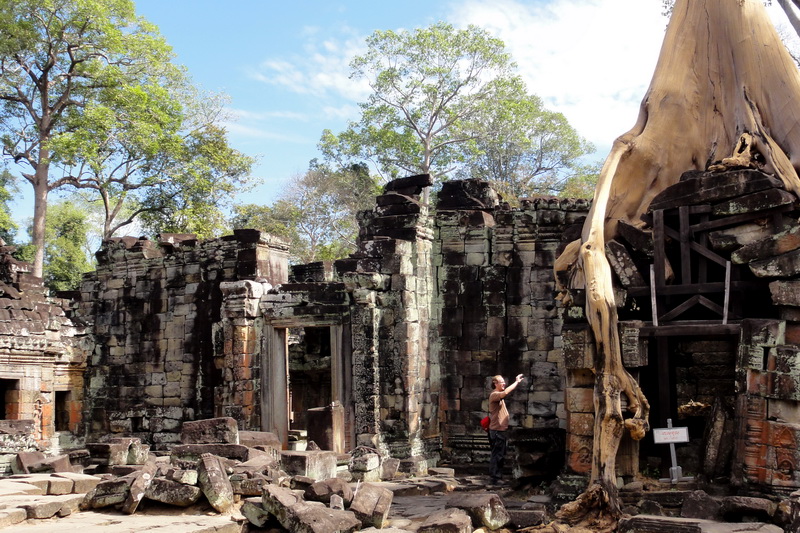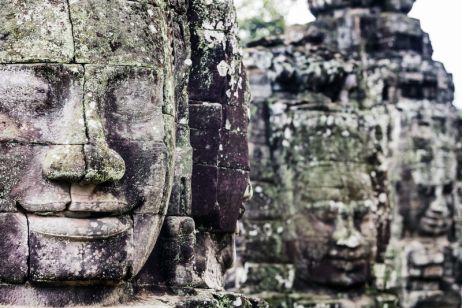Ta Prohm Temple
Ta Prohm, a Bayon style temple, is believed to be built in the late twelfth and early thirteenth centuries. It was founded by King Jayavarman VII as a Mahayana Buddhist monastery and university. Unlike most Angkorian temples, Ta Prohm has been left in much the same condition in which it was found where the photogenic and atmospheric combination of trees growing out of the ruins and the jungle surroundings have made it one of Angkor’s most popular temples with visitors.
Rajavihara (Royal temple), as it was originally known, was one of the first temples founded pursuant to a massive program of construction and public works after the King’s ascension to the throne in 1811 A.D.. It was built in honor of his family. The temple’s main image, representing Prajnaparamita, the personification of wisdom, was modeled on the king’s mother. The northern and southern satellite temples in the third enclosure were dedicated to the king’s guru and his elder brother respectively. As such, Ta Prohm formed a complementary pair with the temple monastery of Preah Khan, dedicated in 1191 A.D., the main image of which represented Avelokitesvara, the Bodhisattva of compassion and was modeled on the king’s father.
The site was home to more than 12,500 people (including 18 high priests and 615 dancers), with an additional 80,000 people in the surrounding villages working to provide services and supplies.






.jpg)


.jpg)

.jpg)
.jpg)